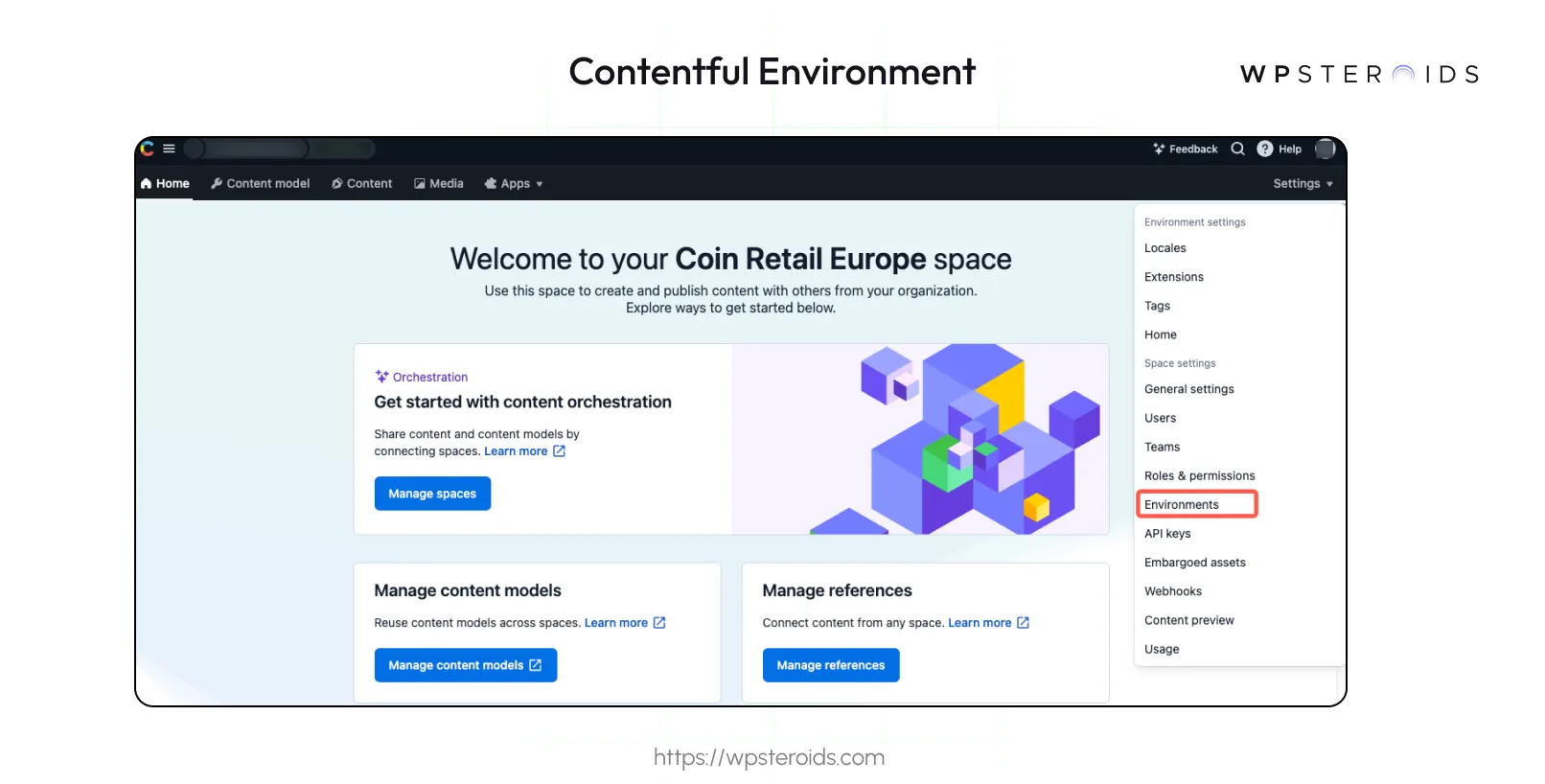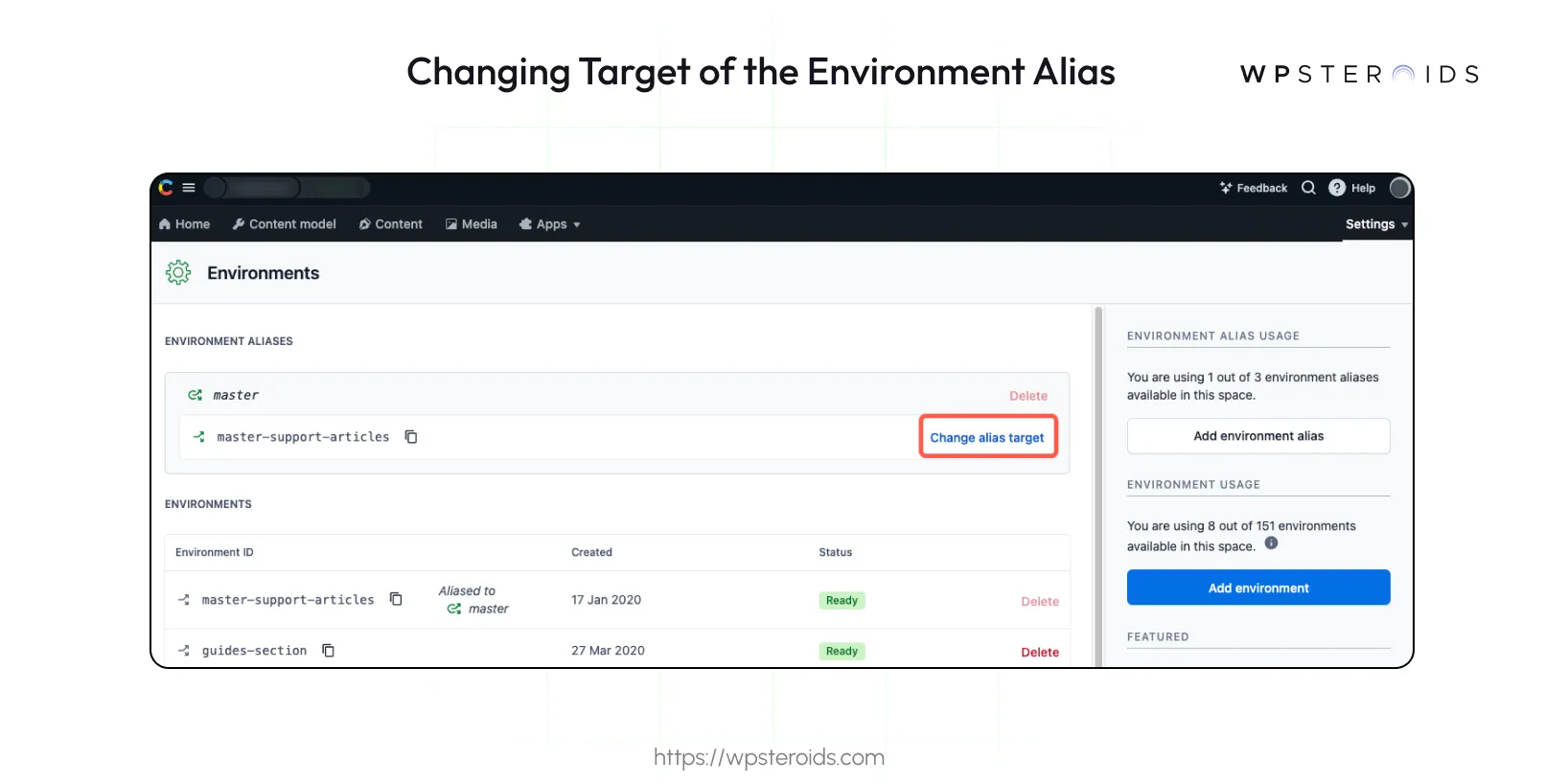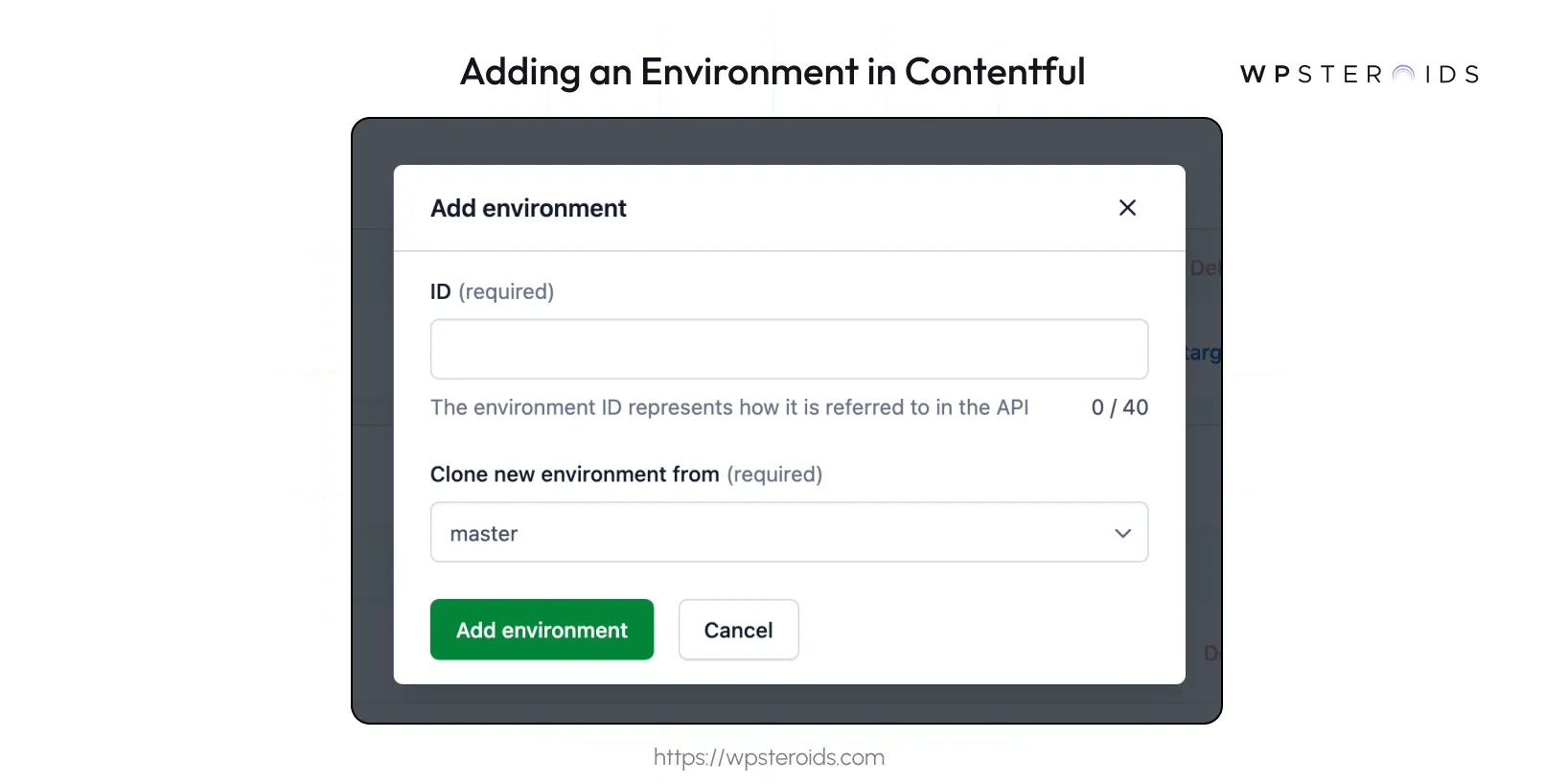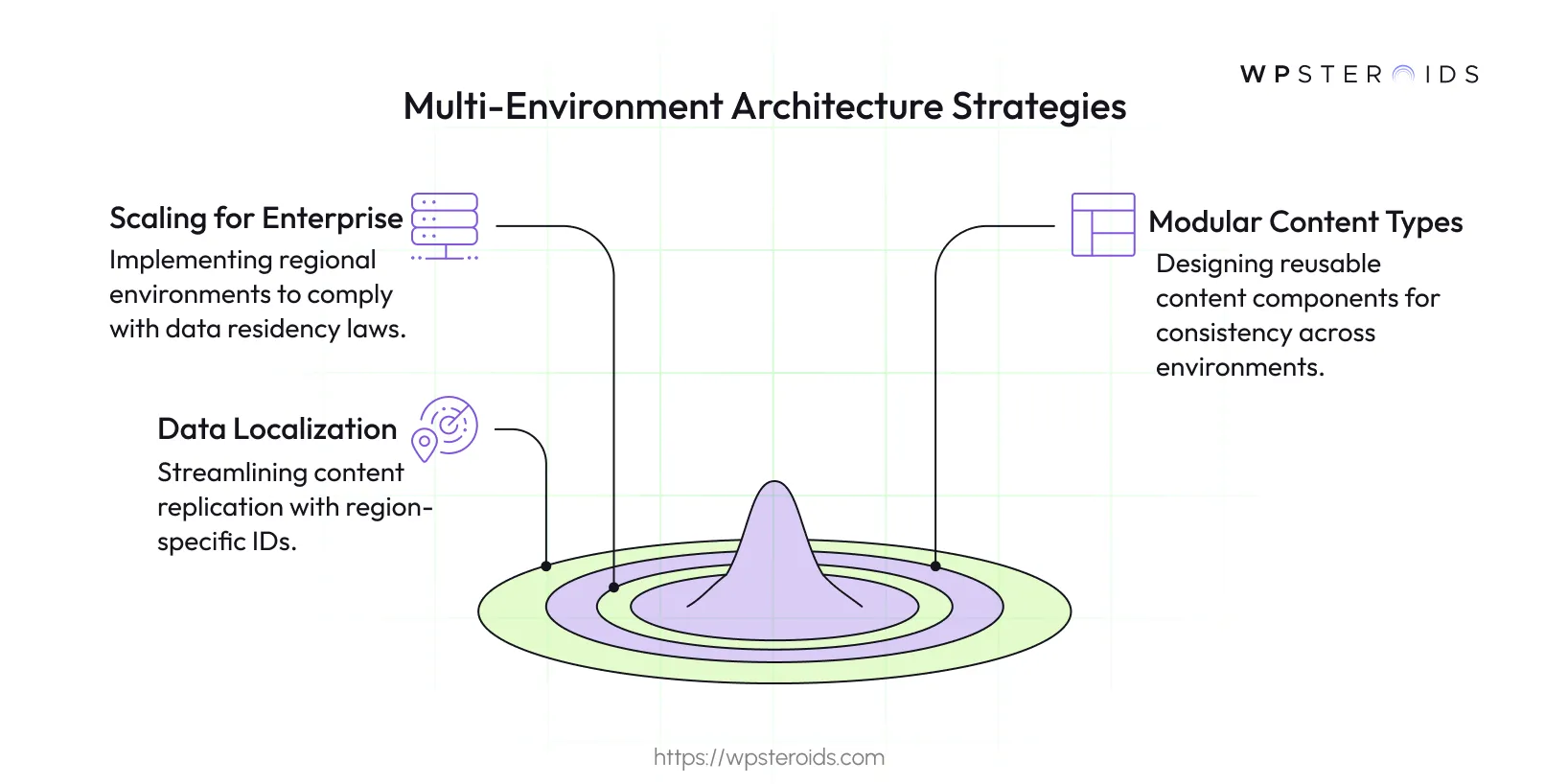Contentful environments are isolated workspaces within a Contentful space that enable teams to manage distinct versions of content, configurations, and code. These environments act as self-contained "sandboxes", allowing developers, content creators, and QA teams to experiment, test, and deploy changes without disrupting live content.
By splitting workflows into development, staging, and production, teams collaborate fearlessly. Need to test a new feature? Try it in staging. Want to draft content? Use the dev environment. But how do these environments actually work? Let’s break it down.
Key use cases include
- Development: Experiment with new content models or integrations in isolation.
- Staging: Validate changes in a production-like setup before deployment.
- Production: Host live content through the `master` environment or aliased environments.
Isolation ensures that modifications in one environment (e.g., adding a content type) do not affect others, making it ideal for collaborative workflows across teams.
Key Components of Contentful Environments
Now that you know what environments are, let’s explore how they’re structured. Think of environments as LEGO blocks—each piece has a specific role but snaps together seamlessly.

- Environment Types
- Production (`master`): The default environment for live content, often aliased to ensure zero-downtime deployments. Covered by SLAs for availability.
- Staging: Mirrors production for final testing. Changes here are validated before promotion.
- Development: Used for experimentation and iterative changes.
- Contentful Environment ID
- A unique identifier for API interactions, following strict naming rules: letters, numbers, underscores, dashes, and dots (e.g., `staging-2024`).
- Critical for programmatic management via CLI or CMA (Content Management API.
- Cloning Environments: Creates an exact copy of a source environment (including entries, assets, and content types) but excludes workflows and tasks.
- Recent Optimization: Contentful’s copy-on-write technology now clones environments in under a minute, even for large datasets, by sharing unchanged content across environments until modified.
Leveraging Contentful Environment Aliases for Seamless Deployments
Ever wished you could flip a switch to update your live site? Enter aliases—the secret to zero-downtime magic.

- What Are Aliases?
Static pointers (e.g., `master`) that route traffic to a target environment. Switching an alias’s target (e.g., from `prod-v1` to `prod-v2`) updates content delivery instantly (<250 ms) without code changes.
- Use Cases
- Zero-Downtime Deployments: Prepare updates in a staging environment, test thoroughly, and switch the `master` alias to the new environment. Rollbacks are equally fast.
- Multi-Team Workflows: Assign custom aliases (e.g., `qa-team`) to streamline testing for specific teams.
- Technical Considerations
- SLA Coverage: Only the `master` alias (or its target environment) is covered by Contentful’s uptime guarantees. Custom aliases lack caching and SLA protection
- Security: Aliases simplify access control—restrict API keys to specific aliases to limit exposure.

Managing Contentful Environments
Getting to the execution part, we’ll now break down how to set up Contentful environments with an easy step-by-step guide.
Creating and Configuring Contentful Environments
Creating environments in Contentful is straightforward, whether through the web app or CLI. Here’s how to do it:
Step-by-Step Guide
- Web App:
- Navigate to Settings > Environments and click Add Environment.
- Define a Contentful Environment ID (e.g., `staging-march-2024`), adhering to naming rules (letters, numbers, underscores, dashes, dots).
- Clone from an existing environment (e.g., `master`) to replicate content types, entries, and assets.

- CLI:
- Use `contentful space environment create --name 'staging' --environment-id 'staging-2024'` to create a new environment.
- Clone with `contentful space environment clone --environment-id 'master' --target-environment-id 'staging'.
Best Practices
- Environment ID Strategy: Use descriptive IDs (e.g., `dev-mobile-app`) for clarity in APIs and logs. Avoid ambiguous names like `temp`.
- Templates: Create a base environment template with standardized content models to streamline future setups (Contentful Help Docs, 2023).
Role-Based Access Control (RBAC) for Contentful Environments
Contentful’s RBAC system lets teams restrict access to environments based on roles.
- Key Policies
- Master Environment: Restrict write access to senior developers or admins to prevent accidental changes.
- Non-Master Environments: Grant broader access to staging/dev for collaborative testing.
- Merging Permissions
- Conflict Resolution: If a user has multiple roles, the least restrictive access applies. For example:
Role A: `Read` access to `master`.
Role B: `Read/Write` access to `staging`.
Result: The user can write to `staging` but only read `master’.

Syncing and Automating Environments in Contentful
Sync staging with production weekly to avoid “it worked on my machine” disasters. Use contentful-export for backups.
- Syncing Best Practices
- Frequency: Sync staging/dev environments with production weekly to minimize drift.
- Tools: Use `contentful-export` and `contentful-import` to migrate content between environments.
- Automation Strategies
- CLI Scripts:
Automate cloning with cron jobs:
contentful space environment clone --environment-id 'master' --target-environment-id 'staging'
- APIs: Use Contentful’s CMA to trigger environment promotions via webhooks.
Strategic Use Cases for Contentful Environments
You’ve set up environments—now what? Let’s turn theory into impact.
Cross-Team Collaboration Workflows
Contentful environments enable seamless collaboration across teams by isolating workflows while maintaining content parity. For example:
- Content Creators: Draft and edit content in a `development` environment using Contentful’s editorial interface.
- Developers: Test new features (e.g., React components) in a `staging` environment, using mirrored content from `development`.
- QA Teams: Validate functionality and content in `staging` before approving promotion to `production`.
Alias-Driven Collaboration: Marketers can preview content in `staging` using an alias like
`preview.contentful.com/staging-alias`, bypassing the need for code changes. This ensures stakeholders review accurate content without disrupting live workflows.
Integrating with CI/CD Pipelines
Automating environment promotion with
CI/CD tools
reduces human error and accelerates deployments.
GitHub Actions Example:
name: Promote Staging to Production
on: [workflow_dispatch]
jobs:
promote:
runs-on: ubuntu-latest
steps:
- name: Update Alias
run: |
contentful space environment alias update \
--alias-id 'master' \
--target-environment-id 'staging-2024'
Content Versioning and Rollbacks
Environments serve as snapshots for content versioning, enabling teams to:
- A/B Testing: Deploy two environments (`variant-a`, `variant-b`) with different content, using aliases to route traffic.
- Rollbacks: Revert to a previous environment by retargeting the `master` alias (e.g., from `prod-v2` to `prod-v1`) in under a minute.
Step-by-Step Rollback:
- Clone the last stable environment (`prod-v1`).
- Update the `master` alias to point to `prod-v1`.
- Delete or archive the faulty environment (`prod-v2`).
Best Practices for Advanced Users
This was just the basics and understanding of the fundamentals. But if you want to level up, let’s talk scaling and smarts.
Designing Multi-Environment Architectures

- Scaling for Enterprise: For global organizations, separate environments by region (e.g., `eu-production`, `na-staging`) to comply with data residency laws like GDPR. Use Contentful’s Environment Aliases to route traffic regionally (e.g., `eu-master` for European users).
- Modular Content Types: Design content types as reusable components (e.g., a “Hero Banner” module) to ensure consistency across environments. For example, a `product-card` content type can be shared between `dev` and `staging`, reducing duplication and sync errors.
- Data Localization: Prior Contentful setups lacked region-specific environments, forcing teams to manually replicate content. Now, cloning with region-specific IDs (e.g., `eu-master`) streamlines compliance.
Monitoring and Analytics
- Environment-Specific Metrics:
- API Performance: Track response times per environment using Contentful’s Delivery API logs. For instance, `staging` environments may show slower responses due to untested integrations.
- Built-in Tools: Contentful’s Environment Health Dashboard provides basic metrics like API call rates and error counts.
- Third-Party Integrations:
- New Relic: Monitor environment-specific CDN cache hits/misses.
- Datadog: Correlate Contentful API latency with backend service performance.
- Limited Native Analytics:
Contentful’s dashboard lacks granular data (e.g., user-specific activity). Tools like Mixpanel fill this gap by tracking editorial actions per environment.
To Sum it Up
Contentful environments empower teams to build scalable, secure, and collaborative content workflows. By isolating development, staging, and production, organizations can experiment fearlessly, deploy updates seamlessly via aliases, and maintain compliance across regions.
To future-proof your Contentful workflow, stay updated via their Product Changelog and beta programs. Leverage community tools like Terraform scripts and CLI plugins for automation, while using version-controlled solutions to avoid deprecation issues.







